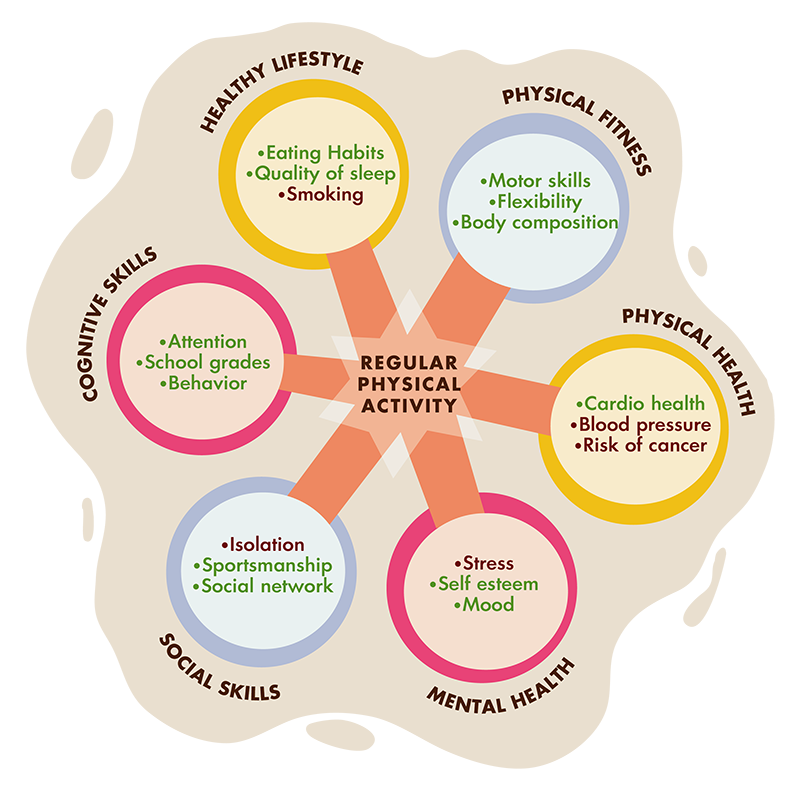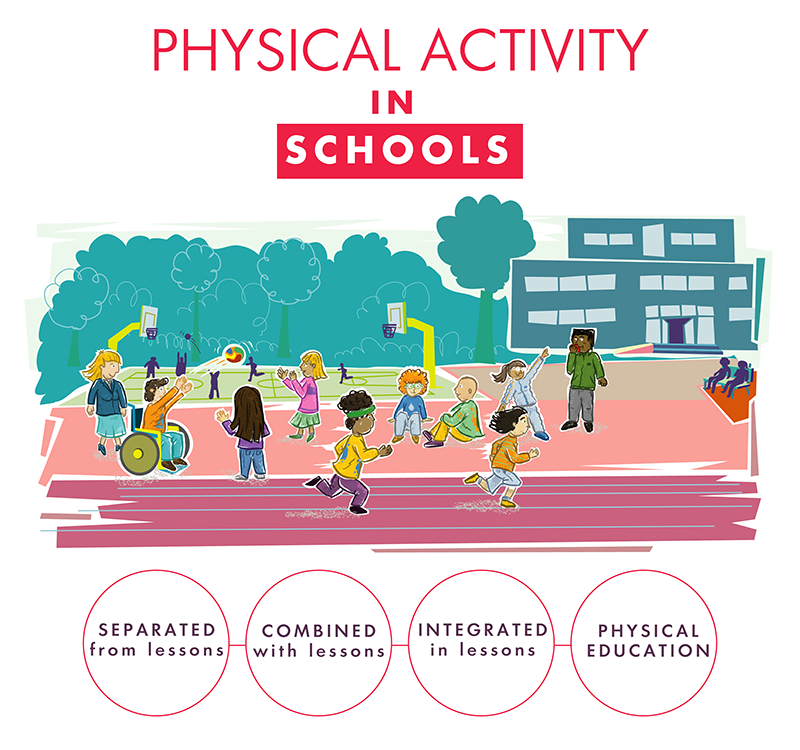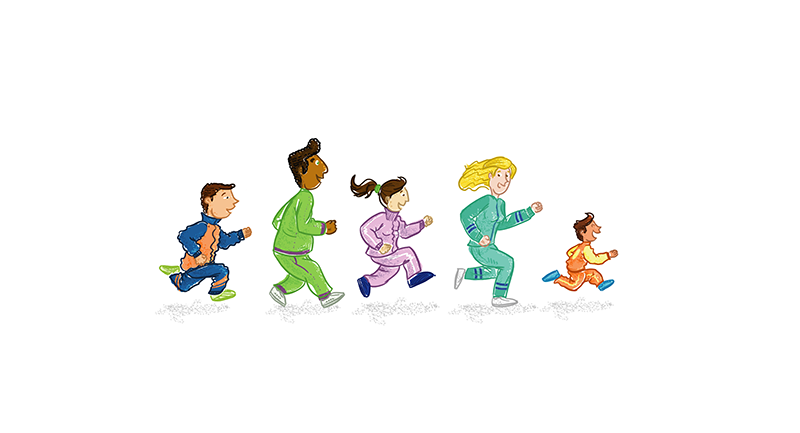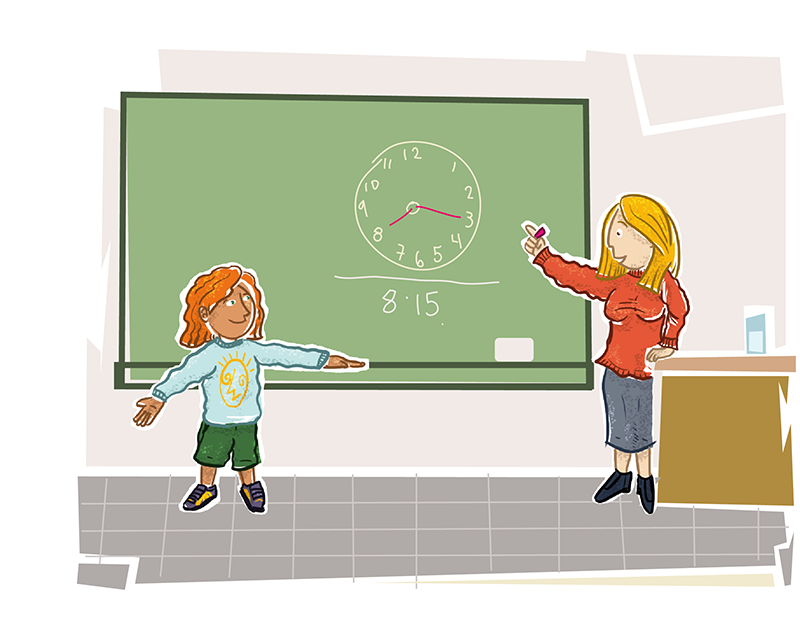Physical Activity in schools
Living Democracy » Principals » ACTIVE SCHOOL » Awareness » Physical Activity in schoolsOpportunities to be active

As illustrated above, regular physical activity directly impacts a person’s physical and mental fitness and social and cognitive skills.
Children’s levels of physical activity are related to their opportunities for physical activity. Among the factors responsible for providing these opportunities, schools have the greatest potential to influence the physical activity behaviors of their students through various ways. Taking into consideration that children are sedentary for much of the school day, it is necessary that the school community also provide opportunities for children to be physically active throughout the school day.
Find out more about how you can support your schools in becoming more active:

- Physical Activity separated from lessons refers to all activities during a school day that have nothing to do with the teaching of the school subjects. These can include:

- Longer and more active breaks and recess time where students are provided with the incentive, means and encouragement to engage in recreation, fun, physical activities and games in the school playground or in specially designed places and facilities. Try considering environmental changes at the school level to facilitate greater physical activity during recess.
- Active commuting to and from school whereby children, in cooperation with the parents, are encouraged to walk, cycle, skateboard to school individually or in groups. Active commuting can also include using public transportation or “walking school buses,” or riding in a car part of the way to school from which students walk the remainder of the way.
- Intra and Extramural Sports and After-School Programs. Sports programs, Sport Events and Competitions have long been an integral part of the school setting, increasing students’ daily participation in physical activity and in organized sports.
- Physical Activity combined with lessons refers mainly to short activity breaks during academic lessons to provide the students with opportunities to move about. In a Danish model, for example, this category is known as Power Breaks that focus on specific learning perspectives. These may include different forms of activities unrelated to the intensity of activities during normal classroom time. Movement activities and physical activity breaks in the classroom provide an additional opportunity for physical activity throughout the school day with minimal planning, requiring no special equipment or resources, and only a short amount of time. For practical ideas see: http://www.coloradoedinitiative.org/wp-content/uploads/2014/08/CEI-Take-a-Break-Teacher-Toolbox.pdf
- Physical Activity integrated in lessons refers to activity as an active part in the teaching of academic lessons. Here, movement and activity are integrated in the learning process, enriching it by reinforcing content and its understanding through active learning. This is especially important for kinesthetic learners. Specific examples and ideas to enhance the learning of content in math, reading / language arts, health, physical education, science and social studies can be found at: http://www.activeacademics.org/

- Physical education refers to the subject of Physical Education in school, which has its own curriculum, goals and practices in every country. Physical Education as a school subject offers all children access to activity and can develop the skills, knowledge and attitudes necessary for them to adopt and maintain a physically active lifestyle. The potential benefits of student participation in physical education are best ensured if Quality Physical Education (QPE) is provided. QPE is defined as “the planned, progressive, inclusive learning experience that forms part of the curriculum in early years, primary and secondary education. The learning experiences offered to children and young people through physical education lessons should be developmentally appropriate to help them acquire the psychomotor skills, cognitive understanding, and social and emotional skills they need to lead a physically active life”. (Source: adapted from Association for Physical Education (afPE) Health Position Paper, 2008)
The proposal is based on the Danish model by Claus Løgstrup Ottesen, AssoAndersrofessor, Anders Flaskager, Associate Professor and Børge Koch, Professor. Department of Physical Education and Health Promotion, University College of Southern Denmark and Danish National Knowledge Center of Health Promotion).

